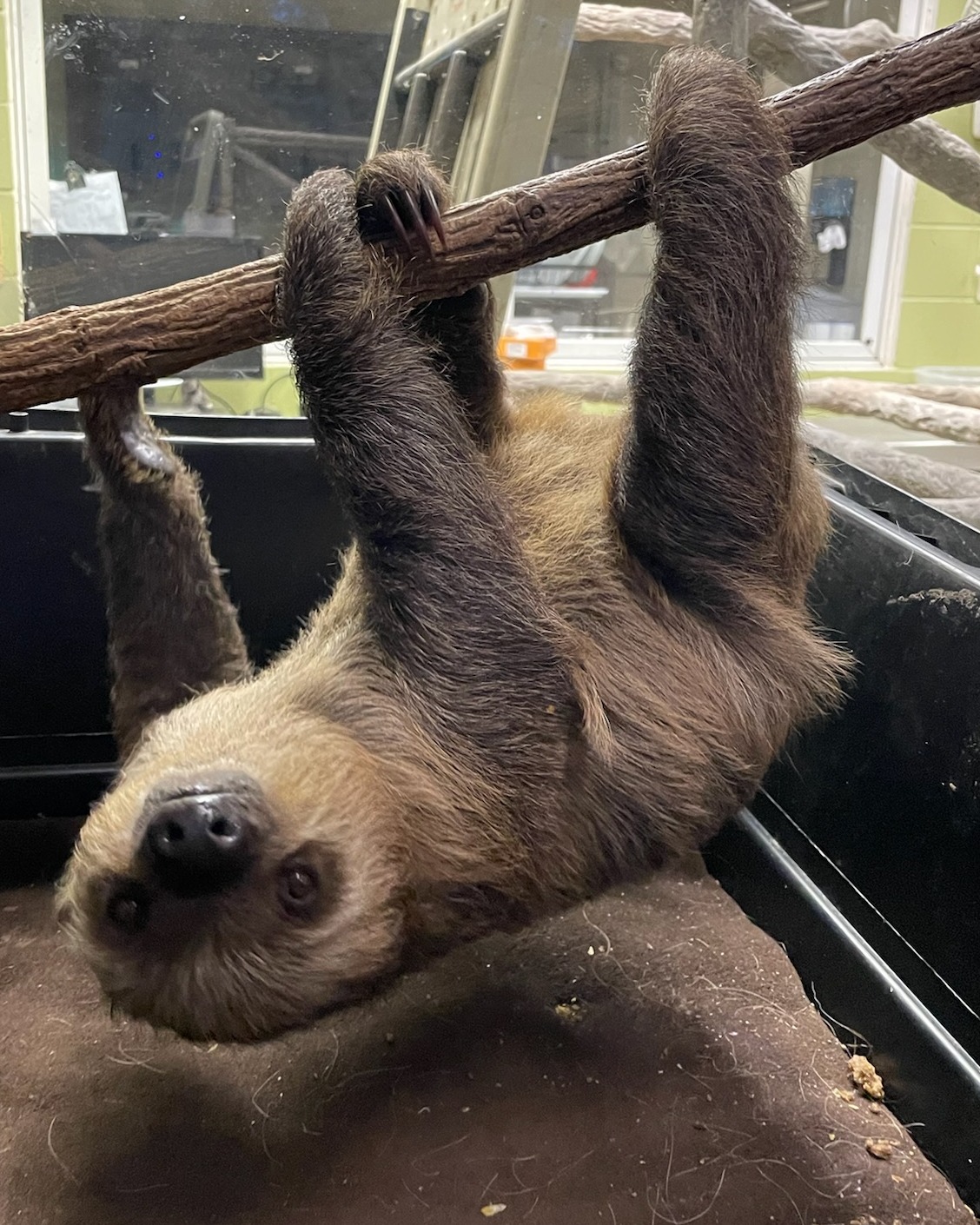– The growth journey of baby sloths and their developmental milestones.
– The significance of independent climbing for young sloths in the wild.
– The bond between mother sloths and their offspring during their early life stages.
The world of the sloth is one marked by a peaceful, unhurried pace. In the thick canopies of the tropical rainforests, these creatures live their arboreal lives with a gentle, deliberate grace that captivates the imagination of all who watch them. Today, we celebrate an exciting milestone in the life of one particular sloth, Juno, who has begun climbing independently, showcasing independence and demonstrating a significant developmental stage that young sloths like her must achieve.
When we think of clinging, we often associate it with dependency and the reluctance to venture into the unknown. However, for a baby sloth, clinging is a survival strategy and a learning process. Clinging to her mother keeps the infant safe from predators and other potential dangers and teaches the subtleties of navigating the complex tangles of their leafy abode. Their bond is paramount to the sloth’s early existence beyond proximity or safety. Baby sloths absorb every nuance of sloth life through this close association for the first six months, from the variety of leaves that make up their diet to the art of slow movement that characterizes their kind.
Juno’s fledgling ascent, therefore, marks more than just physical growth; it is a testament to the natural learning process that has unfolded meticulously over time. This independent climbing signifies a newfound personal strength and the fruition of countless hours of patient observation and muscle memory. Climbing is no small feat for a creature whose very name evokes sluggishness, especially when it involves mastering balance and coordination among the ever-moving branches and vines of the rainforest.
The tree-top world of the sloth is a dynamic habitat where stillness can often be a deceptive façade. Young sloths like Juno must develop a profound sense of their body strength and control to climb effectively. Their slow movements are not a lack of capability but an adaptation to life aloft. Sloths move with a rhythmic, almost meditative precision that minimizes energy expenditure and avoids drawing attention from potential predators. For Juno, to climb independently means engaging in an intricate dance with gravity, where every grasp and every pause counts.
Yet, climbing is not merely a physical milestone. It is also a young sloth’s first true taste of autonomy, a rite of passage into an individual life within the forest canopy. It marks the beginning of her unique path, the expansion of her world from the warmth of her mother’s fur to the expanse of leafy greens and dappled sunlight of the vast forest.
It’s important to appreciate that this shift towards independence does not happen overnight. A seamless and gradual transition has been guided by an innate biological timer that ensures Juno’s readiness to take on the world above. Her mother, acting on instinct and experience, has provided comfort and nutrition and the foundation upon which Juno will build her solitary life. The slow progression from clinging to unaided climbing illustrates a fundamental truth of nature: independence is earned through growth and tempered by resilience.
As we witness Juno ascend her chosen tree, her journey is a gentle reminder of the ebb and flow of growing up. It’s a universal theme that echoes the same hurdles all young beings face as they chart their course through the winding paths of maturity. She teaches us both the beauty of self-sufficiency and the silent, hidden trials it encompasses.
Furthermore, the significance of Juno’s actions stretches far beyond her individual story. Sloths play a vital role in the rainforest ecosystem, acting as mobile gardens and hosts to algae, insects, and birds. The intricate interdependence between these slow-moving mammals and the rainforest’s biodiversity speaks to the delicate balance of our world’s ecosystems. As sloths like Juno climb, they inadvertently distribute seeds and promote the growth of the forest that cradles them. Thus, her growth underscores the importance of conserving the habitats that cradle such unique life forms.
Juno’s ascent is a beacon of hope as well, shining light on conservation efforts that aim to protect and understand species like her. It highlights the value of natural habitats, reminding us of our responsibility to preserve the world’s forests for future generations of all species — sloths, humans, and the myriad other creatures that call these ecosystems home.
Her milestones not only deserve applause but also serve as a subtle encouragement for us to embrace our growth phases. Like Juno, we are climbers in life’s vast forest, facing our series of limbs and leaves in pursuit of personal milestones. Her journey shows that with perseverance and the unfailing support systems nature inherently provides, climbing our obstacles, no matter the pace, is possible.
In conclusion, Juno’s Climbing is a simple but profound story about growth, learning, and the emergence of independence. It is a tale woven intricately into the larger narrative of the forest, where every creature, no matter how seemingly insignificant, plays a role in the ongoing symphony of the natural world. As she climbs, the ecosystem and our understanding of these spectacular creatures ascend with her, reminding us again of the boundless wonder permeating the world’s wild places. May we all draw inspiration from Juno’s journey, recognizing that each of us has our trees to climb, our milestones to celebrate, and our unique roles in life’s grand tapestry.
*****
Source Description
Juno is climbing on her own! 👏 Baby sloths stick close to their mom for about six months before they start exploring independently!

